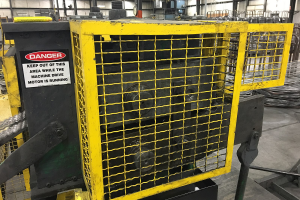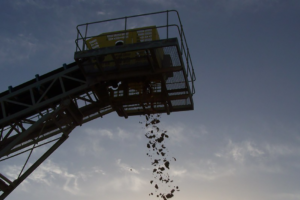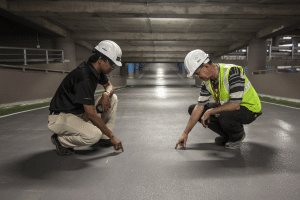OSHA citing maintenance equipment violations despite low risk
Many of you may be wondering why, all of a sudden, OSHA is spending an inordinate amount of time inspecting the machines and equipment in plant maintenance areas. Typically, these machines are used for low-risk tasks performed by skilled workers. However, if you recently experienced OSHA’s increased focus in this area, you may wish you had read this sooner.
Despite the low risk, OSHA often is alleging that typical equipment in maintenance areas is “non-compliant.” The end result is that very reputable companies are experiencing serious violations with thousands of dollars in penalties where compliance is, at best, a very gray area. Below is a list of equipment and issues FDRsafety has seen with our clients, who have been cited for non-compliance with increased frequency:
• Hoist hooks without a safety latch (no general industry OSHA regulation)
• Grinders with the work rest and/or wheel guard not properly adjusted (1/8 and 1/4 inches respectively)
• Insufficient guarding on band saws (the guarding supplied by the manufacturer is not accepted by OSHA in most cases)
• Not guarding the lead screw and/or traverse rod on lathes (no specific OSHA regulation and feasibility of compliance is a real question)
• Storage racks not labeled for load capacity (OSHA’s own interpretation does not require labeling and no specific OSHA standard)
• Lathes, drill presses, mills, etc. not fastened to the floor, citing 29CFR 1910.212(b): Machine(s) designed for fixed location(s) were not securely anchored to prevent walking or moving (Most of the cited machines could never move during normal operation)
Most safety pros will react with, “You have to be kidding me.” We are not. Despite the very low risk, OSHA is indeed citing for the things noted above.
I am not suggesting that you run out and anchor the maintenance equipment that could never move during normal operation or search for after-market guarding for lathe lead screws. I am suggesting that you take a proactive and efficient approach after you have made sure that no employees are at risk. This approach will help defend against potential citations that can cost your company much in terms of time, money and resources to defend against OSHA’s allegations where, in your opinion, there is no hazard to your employees.
A properly documented risk assessment may not prevent OSHA violations, but should, and will, help mitigate the violation classification and attendant penalty. We suggest that you:
• Assemble a team of safety professionals, supervision and employee(s).
• Do a walk-through and assess your current state of compliance.
For things like anchoring machines, try to move or tip them. Document your findings. If you find something that could move during operation, secure it. If not, estimate weight and stability and document your findings.
For things like adjusting the guards on grinders and saws, make sure employees are trained and warnings are in place. Think about adding new labels to remind employees of your policies and do regular and frequent inspections with appropriate documentation.
• Review actions taken with affected employees and advise those who may be exposed to a hazard what you did and why
• Keep copies of all documentation in the safety office and in the maintenance area
• If / when OSHA shows up for an inspection, have your supervision and employees show the compliance officer the dated and documented risk assessment that you have conducted
If you need further clarification, contact me at mtaubitz@fdrsafety.com .


